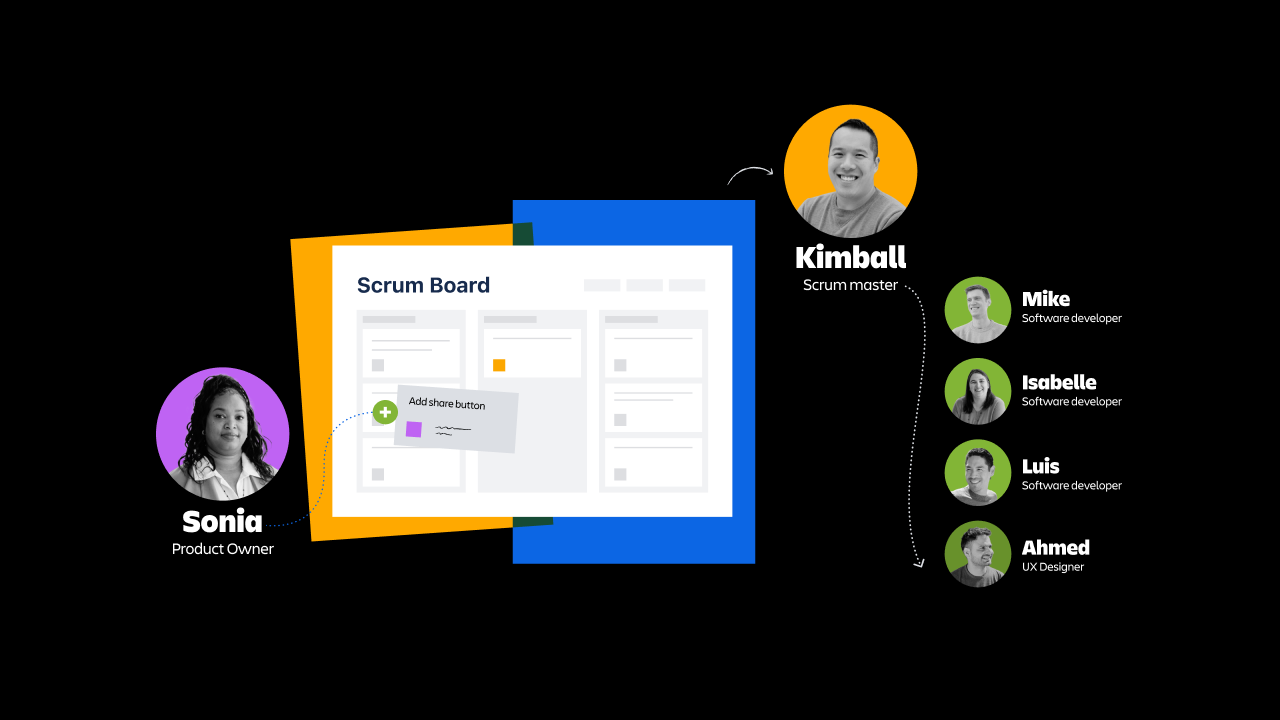Use a scrum board in Jira
15 min
Beginner
By the end of this lesson, you'll be able to:
- Identify a scrum board
- Navigate a scrum board in Jira
- Identify a board's workflow
- Identify when sprints start and end
- Access the backlog
What's a scrum board?
Like kanban, scrum also uses a board to manage work items. The difference is that a kanban board has a continuous flow of work items and a scrum board has an estimated set of work items based on a time-boxed sprint cycle.
As a team member, it's your responsibility to update the scrum board and use it to communicate. Make sure you stay actively engaged with your board every day so your team is aware of the progress.
👇 To access your scrum board in Jira, select your project from the left sidebar then select Active sprints tab from the horizontal navigation bar.
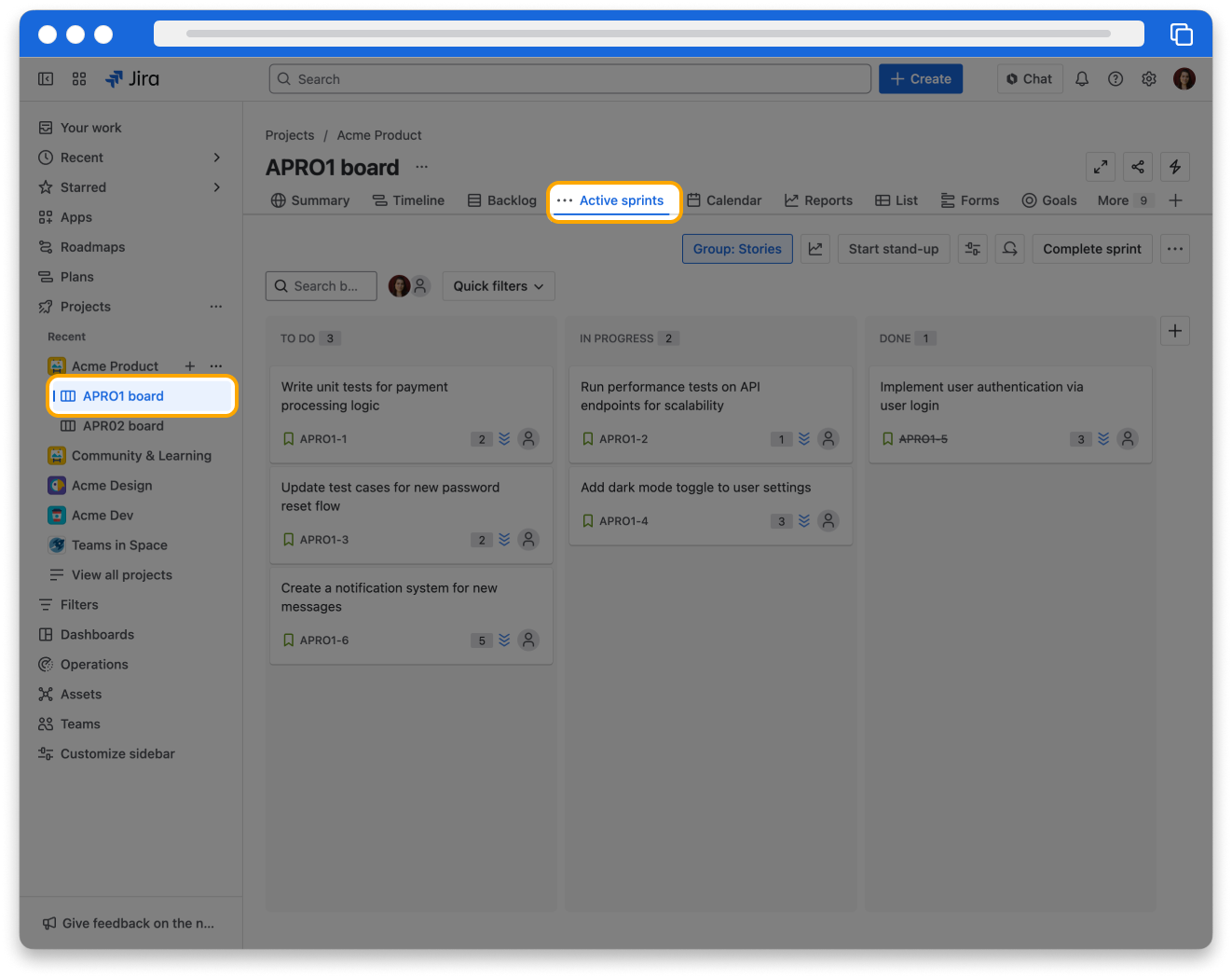
If you don't see an Active Sprints or Sprints option in your horizontal bar, you might be in a kanban board. You may need to change to a different board, or your team may not have a scrum board yet.
Find your workflow
Now that you're viewing your team's board, take a look at the columns to identify your workflow. Every team uses a custom workflow, so yours may look different than the example below.
Spend some time with your workflow and understand the criteria to move work items across each of the columns.
👇 Examine your board columns to understand your team's workflow.
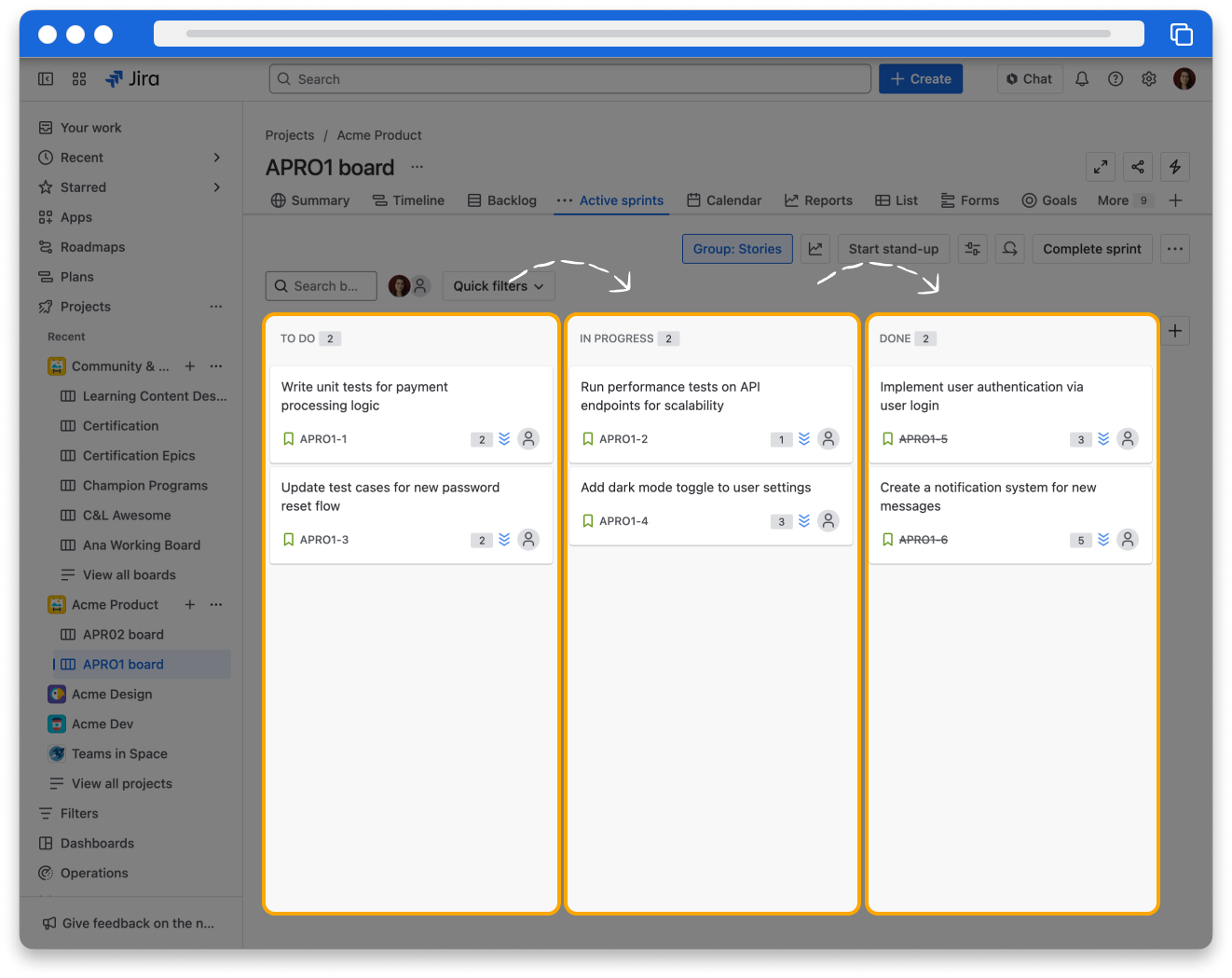
View sprint dates
Your scrum board gives you key information about your sprints.
First, are the number of days remaining in your sprint. This helps you plan and prioritize your work.
The Sprint detail button shows you how many days are remaining in your current sprint. It also provides the exact start and end date of your current sprint.
👇 To see the sprint details, select the Sprint details button.
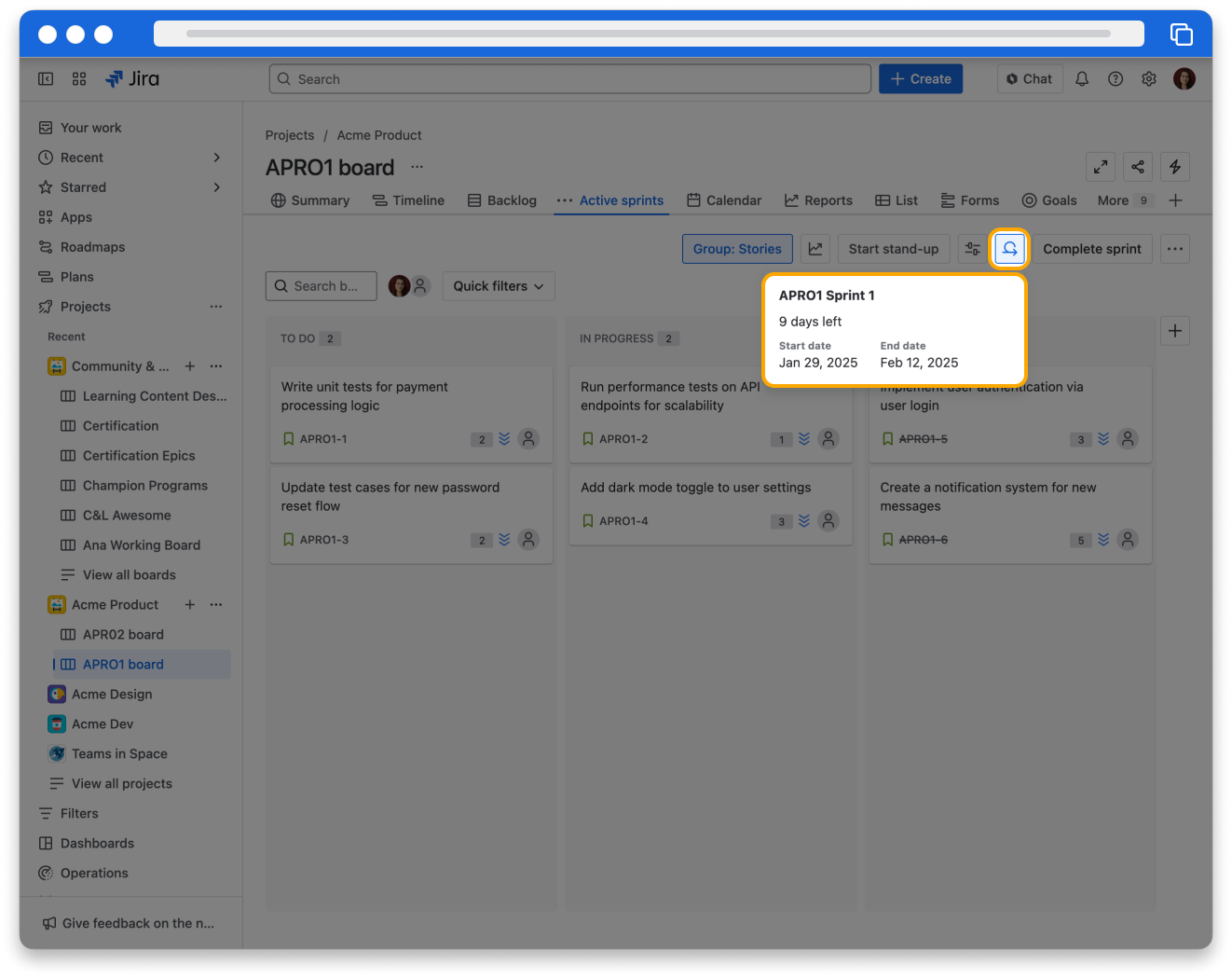
Explore the backlog
Your backlog holds the work items for future sprints. In your planning meetings, you'll rank work items based on their importance or urgency.
To access your backlog, navigate to the project in the sidebar and select Backlog from the horizontal tabs. This will bring you to a list of work items. You can drag and drop work items to different sprints in the backlog, depending on their importance.
👇 Here's how to find your backlog in Jira.
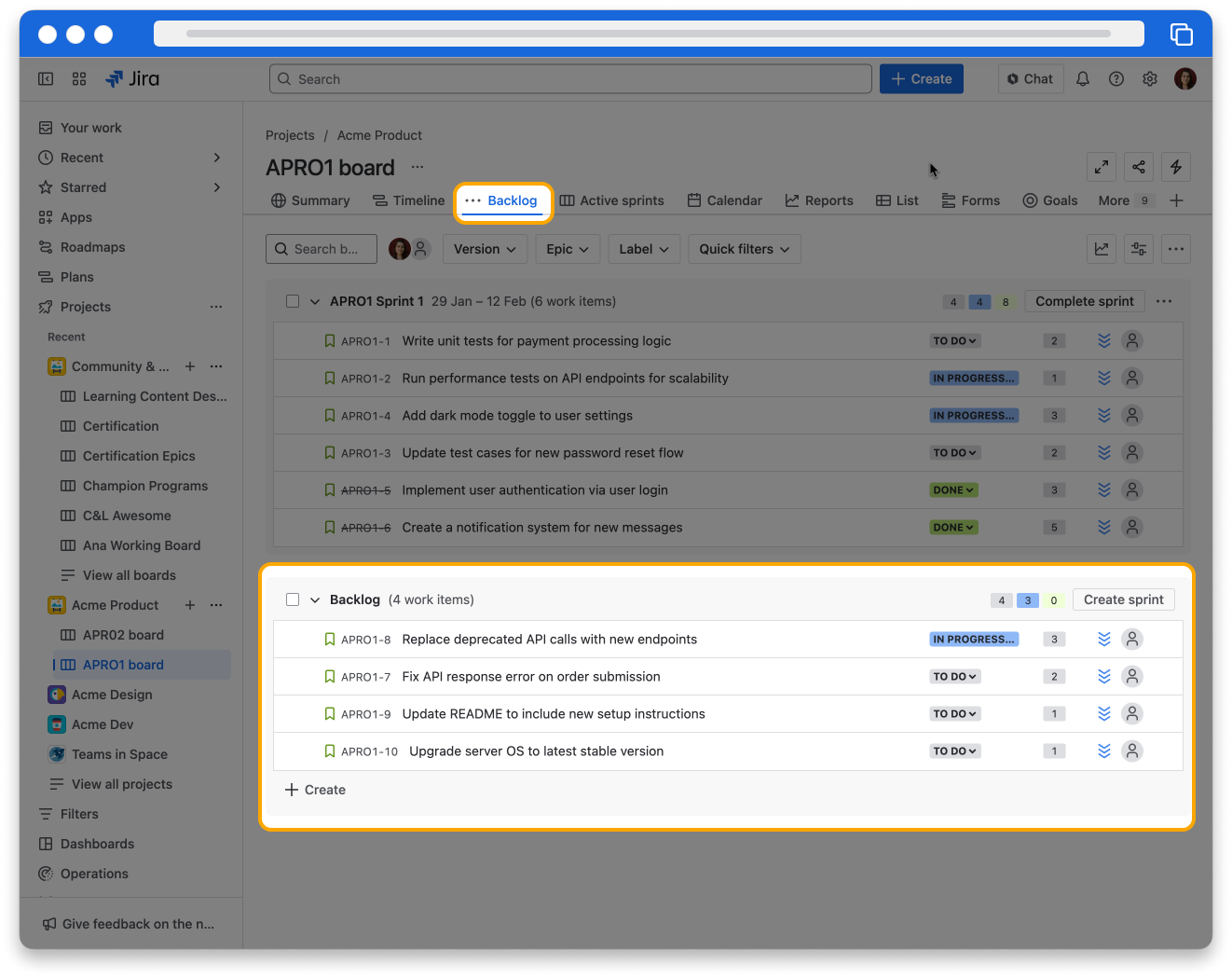
Let's consider an example
IceStream is an iOS app that recommends movies to watch based on your ice cream preferences. The company uses the scrum framework to manage its software development work. The scrum team has six people:
- Sonia: product owner
- Kimball: scrum master
- Ahmed: UX designer
- Mike: software developer
- Isabelle: software developer
- Luis: software developer
👇 Click the tabs below to explore how this team works.
Before the new sprint starts, Sonia, the product owner, looks at customer feedback. Adding a new share button seems to be the most requested feature. Sonia moves this work to the top of the product backlog.
Kimball, the scrum master, gathers the whole team for a sprint planning meeting. They discuss the new share button, create the tasks, and assign the tasks to the relevant team member. The group decides the sprint goal should be to deliver a working version of the share button in the app.
Then, it's time to get to work! The two-week sprint begins, and Mike, Isabelle, Luis, and Ahmed start working on their tasks.
